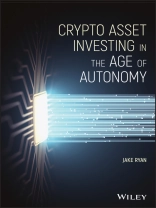Competition, the drive for efficiency, and continuous improvement ultimately push businesses toward automation and later towards autonomy. If a business can operate without human intervention, it will minimize its operational cost. If Uber can remove the expense of a driver with an autonomous vehicle, it will provide its service cheaper than a competitor who can’t. If an artificially intelligent trading company can search, find, and take advantage of some arbitrage opportunity, then it can profit where its competitors cannot. A business that can analyze and execute in real-time without needing to wait for a human to act, is a business that will be able to take advantage of brief inefficiencies from other markets or businesses.
This trend following a thesis that is based on 100 years of proven economic theory. Short-wave economic cycles, those 5- to 10-year cycles, are driven by credit but the long-wave economic cycles, those 50- to 60-year cycles, are driven by technological revolution. We’ve had 5 cycles over the past 200 years with the last wave, the Age of Information & Telecommunications.
We’ve seen evidence that a new cycle has begun. Technological revolutions come by way of a cluster of new innovations. About a decade ago, you started to see AI, robotics and Io T (sensors) delivering on automation. That’s been powerful, but not transformational. It does not force businesses to fundamentally change how they do business. The last piece of the puzzle was cryptocurrency because it allows us to process and transfer economic value without human intervention. Soon, there will be a global race to build autonomous operations. Businesses and organizations without autonomous operations simply will not be able to compete with those that do because … autonomy is the ultimate competitive advantage.
Crypto is the mechanism that will accrue value from being the infrastructure for the next digital financial revolution. Crypto Asset Investing lays out a case that we’ve begun a new technological revolution similar to the Internet Age of the 1990’s. Artificial intelligence, the Internet of Things, robotics and cryptocurrency are converging to deliver on a new age, what I call the Age of Autonomy. Understanding the transformation that’s taken place before anyone else can yield enormous investment opportunity. In this book, you’ll learn how and why to invest in crypto assets.
Table of Content
Acknowledgments vii
Author’s Note ix
Introduction – Why This Book and Why Now xi
Part I The History of Economic Cycles and Monetary Policy 1
1 The Fed and You: A Brief History 3
2 Understanding Economic Cycles 16
3 The Long-wave Economic Cycle 27
4 Safe is the New Risky 35
5 Credit and Commodity Currencies 43
6 The Fall of Credit Money and the Rise of Multicurrencies 56
Part II The Rise of Blockchain and the Age of Autonomy 79
7 A Digital Commodity: Bitcoin as Digital Gold 81
8 Blockchains 100
9 The Age of Autonomy 117
10 Clusters of Innovation in the Age of Autonomy 130
11 The Case for Investing in Crypto Assets 141
Part III Crypto Investment Strategies 155
12 A Primer on Crypto Asset Investing 157
13 Quantitative Analysis Frameworks 176
14 Understanding Crypto Asset Classes 198
15 Investment Themes 209
16 Building an Investment System 223
Notes 245
Further Reading and Resources 255
Appendix 259
Index 265
About the author
JAKE RYAN is the Chief Investment Officer at Tradecraft Capital, a crypto asset hedge fund. He holds a degree in computer science with a specialty in artificial intelligence from the University of Texas at Austin, and has his early work cited with over 700 Google Scholar citations. He went on to become a software entrepreneur and investor in traditional markets, building a multi-million-dollar software services firm and continuing as a successful angel investor before focusing on the crypto asset investment.












